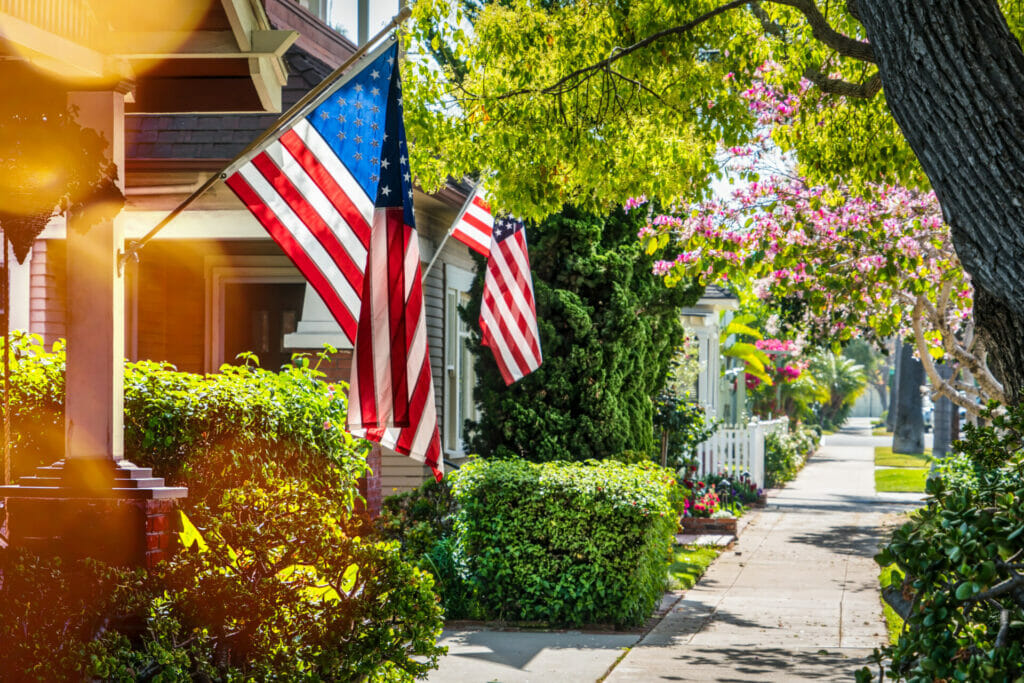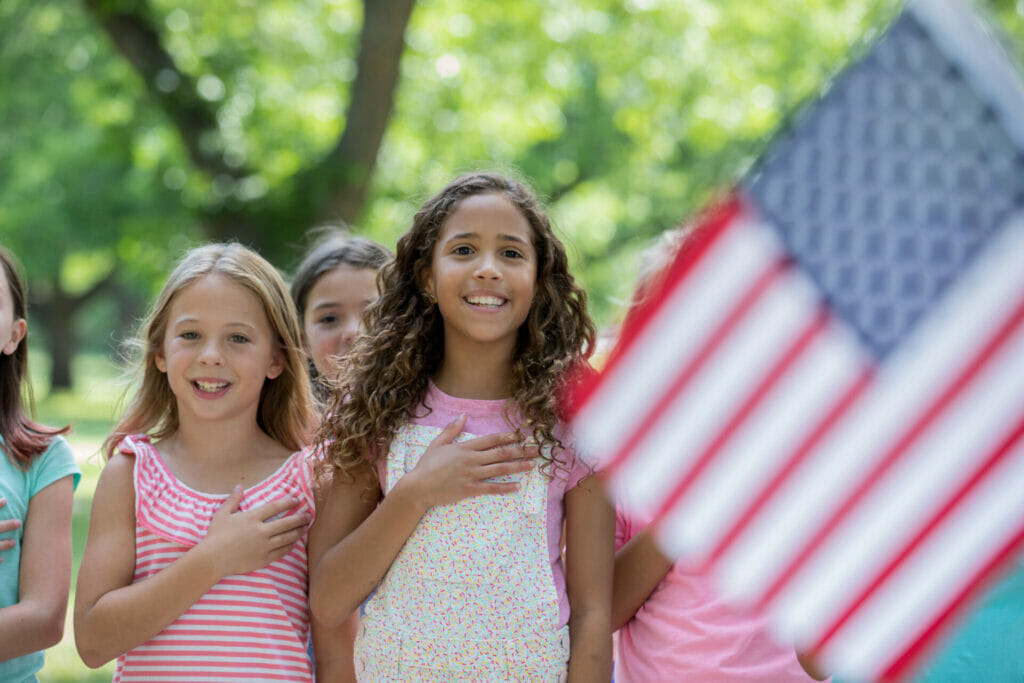When it comes to cultural norms, every country has its own unique customs and traditions. What may seem perfectly normal to one group of people can be completely baffling to others. In the case of the United States, there are some behaviors and practices that Americans consider to be completely ordinary, but leave the rest of the world scratching their heads in confusion. From peculiar dining habits to unusual laws, let’s explore 40 bizarre American customs that leave the rest of the world perplexed.
1. Massive Portion Sizes

When it comes to food, Americans are known for their love of supersized portions. While larger portions may be seen as a sign of abundance and value in the US, the rest of the world often finds it excessive. Plates overflowing with food can be overwhelming for those accustomed to more modest serving sizes.
2. Tipping Culture
In many countries, tipping is seen as a discretionary gesture of gratitude for exceptional service. However, in the United States, tipping is an integral part of the service industry and is expected in restaurants, bars, taxis, and other service-oriented establishments. Americans typically tip around 15-20% of the total bill, which can be a surprise for visitors from countries where tipping is less common or even considered rude.
3. The Date Format
While most of the world uses the logical and standardized format of day/month/year, Americans have their own unique way of writing dates: month/day/year. This can lead to confusion and misunderstandings, especially in international business settings or when scheduling appointments.
4. Flag Obsession

Americans are proud of their country, and this is often displayed through the ubiquitous presence of the American flag. From homes to schools to public spaces, flags can be seen waving proudly. This level of flag obsession is something that the rest of the world finds difficult to comprehend.
5. Overly Friendly Behavior

Americans are known for their friendly and outgoing nature. Strangers often strike up conversations and exchange pleasantries, even in casual encounters. While this may be seen as welcoming in the US, it can be seen as intrusive or insincere in other cultures.
6. The Concept of Personal Space
Personal space is highly valued in many cultures, but Americans seem to have a different perspective. Physical proximity and touching, such as hugging or patting someone on the back, are considered normal and acceptable in American social interactions. This can make individuals from more reserved cultures feel uncomfortable or invaded.
7. Drive-Thru Everything

Americans are always on the go, and this is reflected in their love for drive-thru services. From fast food restaurants to banks and pharmacies, there seems to be a drive-thru option for almost everything. This convenience-driven culture is unique to the US and can be quite baffling to visitors.
8. School Proms and Homecoming

American high schools are known for their elaborate proms and homecoming celebrations. These events, complete with formal attire, dancing, and even crowning a prom king and queen, are seen as quintessential American experiences. The rest of the world often lacks similar traditions, leading to bewilderment and curiosity.
9. The Pledge of Allegiance

Every morning in American schools, students stand and recite the Pledge of Allegiance, declaring their loyalty to the flag and the United States. This daily ritual, which includes placing a hand over the heart, is seen as patriotic by Americans but may be viewed as excessive or even indoctrination by outsiders.
10. Gun Culture

The United States has a unique relationship with firearms, with the right to bear arms enshrined in the Second Amendment of the Constitution. This has fostered a gun culture that sets the US apart from the rest of the world. The prevalence of guns and the debates surrounding gun control can be difficult for outsiders to comprehend.
11. Sales Tax Surprise
Unlike many other countries where the sales tax is included in the price tag, the US adds the sales tax at the register. This can lead to confusion for visitors who are not accustomed to mentally calculating the total cost of their purchases.
12. Open Toilet Stall Design

Restroom design is another aspect of American culture that leaves the rest of the world scratching their heads. In many countries, toilet bowls are fully enclosed, providing privacy and reducing unpleasant odors. However, in the US, open toilet stall designs are common, which can be quite off-putting for those used to more private facilities.
13. Legal Drinking Age
In most countries, the legal drinking age is 18 or 19, allowing young adults to enjoy alcohol responsibly. However, in the US, the legal drinking age is 21. This restriction often surprises visitors from countries where young adults are trusted to handle alcohol at an earlier age.
14. Healthcare Costs
The American healthcare system is notorious for its high costs and lack of universal coverage. The concept of medical bankruptcy, where individuals face financial ruin due to exorbitant medical bills, is difficult for the rest of the world to understand. In countries with universal healthcare, the idea of being financially devastated by necessary medical treatment seems unfathomable.
15. Election Campaigns
American election campaigns are often characterized by intense polarization and negative advertising. The rest of the world finds it perplexing that political opponents would engage in smear campaigns rather than focusing on policy discussions. The amount of money spent on election campaigns is also staggering in comparison to other countries.
16. College Sports

College sports play a significant role in American culture, with universities boasting dedicated fan bases and massive stadiums. The rest of the world struggles to comprehend the level of enthusiasm and support that college sports receive, as universities in other countries prioritize academics over sports.
17. Casual Dressing
Americans are known for their casual approach to dressing, even in professional settings. This can be surprising to those from cultures where more formal attire is expected in the workplace. The relaxed dress code in the US reflects a different approach to professionalism and personal expression.
18. Ice in Drinks

Americans love their beverages ice-cold, and this is evident in the liberal use of ice in drinks. While other countries may serve drinks at room temperature or with minimal ice, Americans are accustomed to having their drinks chilled to the point of being almost frozen.
19. Drive on the Right Side
The United States is one of the few countries in the world where driving on the right side of the road is the norm. This can be disorienting for visitors from countries where driving on the left side is the standard practice.
20. Constant Refills
In American restaurants, it is common for waitstaff to offer constant refills of beverages, particularly soft drinks. This unlimited supply of refills may seem excessive to those from countries where drink refills are not the norm.
Conclusion
The United States is a country filled with unique customs and traditions that can be baffling to outsiders. From the obsession with flag display to the love for supersized portions, Americans have their own way of doing things. While these customs may seem perfectly normal to Americans, they often leave the rest of the world perplexed. Understanding and appreciating cultural differences is key to promoting global understanding and acceptance. So, the next time you encounter a peculiar American custom, remember that it’s all part of the rich tapestry of cultural diversity in our world.
2. Tipping Culture
In many countries, tipping is seen as a discretionary gesture of gratitude for exceptional service. However, in the United States, tipping is an integral part of the service industry and is expected in restaurants, bars, taxis, and other service-oriented establishments. Americans typically tip around 15-20% of the total bill, which can be a surprise for visitors from countries where tipping is less common or even considered rude.
3. The Date Format
While most of the world uses the logical and standardized format of day/month/year, Americans have their own unique way of writing dates: month/day/year. This can lead to confusion and misunderstandings, especially in international business settings or when scheduling appointments.
4. Flag Obsession

Americans are proud of their country, and this is often displayed through the ubiquitous presence of the American flag. From homes to schools to public spaces, flags can be seen waving proudly. This level of flag obsession is something that the rest of the world finds difficult to comprehend.
5. Overly Friendly Behavior

Americans are known for their friendly and outgoing nature. Strangers often strike up conversations and exchange pleasantries, even in casual encounters. While this may be seen as welcoming in the US, it can be seen as intrusive or insincere in other cultures.
6. The Concept of Personal Space
Personal space is highly valued in many cultures, but Americans seem to have a different perspective. Physical proximity and touching, such as hugging or patting someone on the back, are considered normal and acceptable in American social interactions. This can make individuals from more reserved cultures feel uncomfortable or invaded.
7. Drive-Thru Everything

Americans are always on the go, and this is reflected in their love for drive-thru services. From fast food restaurants to banks and pharmacies, there seems to be a drive-thru option for almost everything. This convenience-driven culture is unique to the US and can be quite baffling to visitors.
8. School Proms and Homecoming

American high schools are known for their elaborate proms and homecoming celebrations. These events, complete with formal attire, dancing, and even crowning a prom king and queen, are seen as quintessential American experiences. The rest of the world often lacks similar traditions, leading to bewilderment and curiosity.
9. The Pledge of Allegiance

Every morning in American schools, students stand and recite the Pledge of Allegiance, declaring their loyalty to the flag and the United States. This daily ritual, which includes placing a hand over the heart, is seen as patriotic by Americans but may be viewed as excessive or even indoctrination by outsiders.
10. Gun Culture

The United States has a unique relationship with firearms, with the right to bear arms enshrined in the Second Amendment of the Constitution. This has fostered a gun culture that sets the US apart from the rest of the world. The prevalence of guns and the debates surrounding gun control can be difficult for outsiders to comprehend.
11. Sales Tax Surprise
Unlike many other countries where the sales tax is included in the price tag, the US adds the sales tax at the register. This can lead to confusion for visitors who are not accustomed to mentally calculating the total cost of their purchases.
12. Open Toilet Stall Design

Restroom design is another aspect of American culture that leaves the rest of the world scratching their heads. In many countries, toilet bowls are fully enclosed, providing privacy and reducing unpleasant odors. However, in the US, open toilet stall designs are common, which can be quite off-putting for those used to more private facilities.
13. Legal Drinking Age
In most countries, the legal drinking age is 18 or 19, allowing young adults to enjoy alcohol responsibly. However, in the US, the legal drinking age is 21. This restriction often surprises visitors from countries where young adults are trusted to handle alcohol at an earlier age.
14. Healthcare Costs
The American healthcare system is notorious for its high costs and lack of universal coverage. The concept of medical bankruptcy, where individuals face financial ruin due to exorbitant medical bills, is difficult for the rest of the world to understand. In countries with universal healthcare, the idea of being financially devastated by necessary medical treatment seems unfathomable.
15. Election Campaigns
American election campaigns are often characterized by intense polarization and negative advertising. The rest of the world finds it perplexing that political opponents would engage in smear campaigns rather than focusing on policy discussions. The amount of money spent on election campaigns is also staggering in comparison to other countries.
16. College Sports

College sports play a significant role in American culture, with universities boasting dedicated fan bases and massive stadiums. The rest of the world struggles to comprehend the level of enthusiasm and support that college sports receive, as universities in other countries prioritize academics over sports.
17. Casual Dressing
Americans are known for their casual approach to dressing, even in professional settings. This can be surprising to those from cultures where more formal attire is expected in the workplace. The relaxed dress code in the US reflects a different approach to professionalism and personal expression.
18. Ice in Drinks

Americans love their beverages ice-cold, and this is evident in the liberal use of ice in drinks. While other countries may serve drinks at room temperature or with minimal ice, Americans are accustomed to having their drinks chilled to the point of being almost frozen.
19. Drive on the Right Side
The United States is one of the few countries in the world where driving on the right side of the road is the norm. This can be disorienting for visitors from countries where driving on the left side is the standard practice.
20. Constant Refills
In American restaurants, it is common for waitstaff to offer constant refills of beverages, particularly soft drinks. This unlimited supply of refills may seem excessive to those from countries where drink refills are not the norm.
Conclusion
The United States is a country filled with unique customs and traditions that can be baffling to outsiders. From the obsession with flag display to the love for supersized portions, Americans have their own way of doing things. While these customs may seem perfectly normal to Americans, they often leave the rest of the world perplexed. Understanding and appreciating cultural differences is key to promoting global understanding and acceptance. So, the next time you encounter a peculiar American custom, remember that it’s all part of the rich tapestry of cultural diversity in our world.
